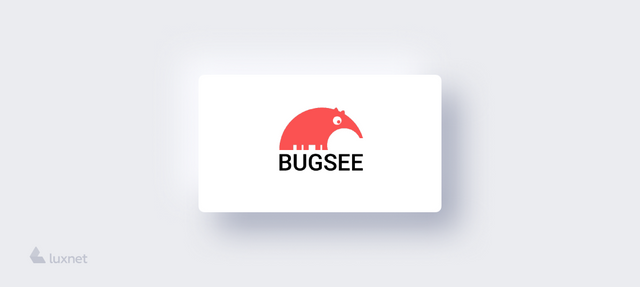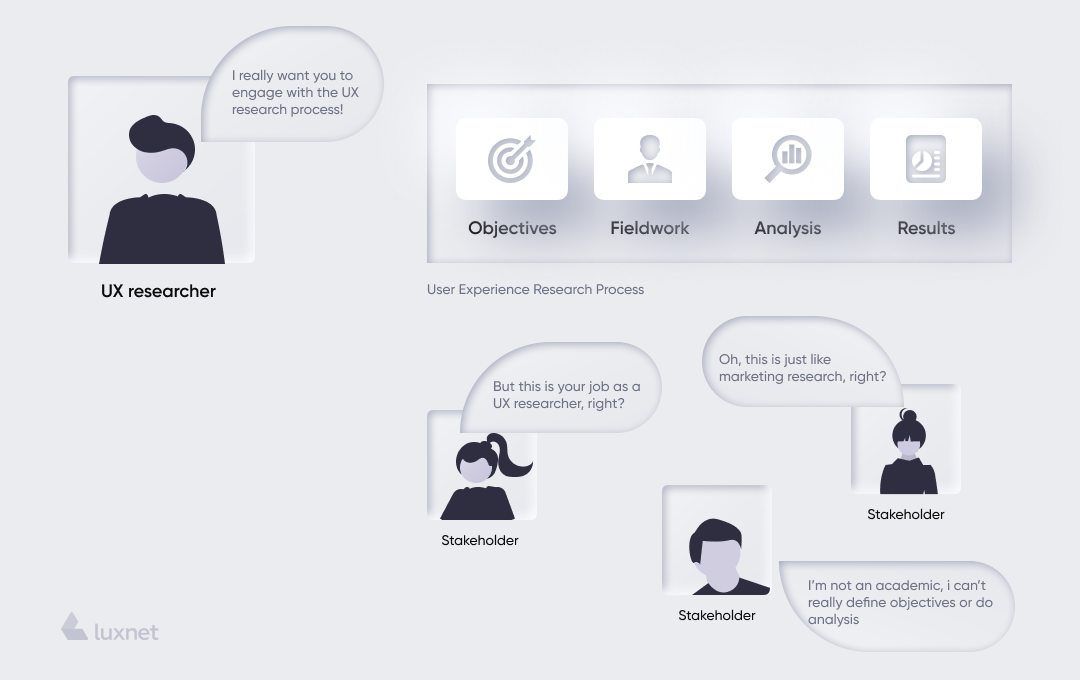UX research methodology is not an easy field. Everything is interconnected here: science, marketing, experience, emotions and not just that. Formally, this is target-oriented and detailed user research: the analysis of everything he/she does, aims at, as well as what can repel him/her.
What is UX Research?
UX research methodology is not an easy field. Everything is interconnected here: science, marketing, experience, emotions and not just that. Formally, this is target-oriented and detailed user research: the analysis of everything he/she does, aims at, as well as what can repel him/her.
UX research is a set of fundamentally different analytical methods that are used to understand the design process better. Speaking in plain terms, UX research helps to identify specific goals, confirm or contradict the company's assumptions about the customer. Furthermore, UX design research allows you to better feel the user and to understand his/her preferences.
Such methods of work allow to make business simpler in performance, but qualitative in rendering a certain service. Basically, when you know what the user wants when you understand his/her basic needs and even secret fears (!), you can be better oriented in strategizing internal and external factors. To summarize and explain shortly, UX research is an understanding of how useful and profitable your business is.
Common User Research Methodologies (UX methods)
But let’s start from another issue.
There are two main types of UX research:
- Quantitative user research. This is statistical data. The researcher can calculate or estimate a certain number of users, likes, visits, etc... In a word, everything related to numbers and quantitative indicators.
- Qualitative UX research method. It's about understanding. Qualitative type refers to abstract things that are not less important in the research: these are ideas, descriptions, and emotions.

And by applying a certain type of research, it is possible to use the following methods of user experience design research:
Observation
- The first step is always observation. Examine the environment around you. What is the market situation? Do you offer something original? What makes your product better than others? How does your customer usually behave? And where is he/she: on the Internet or in the store? Investigate the internal environment too.
- How do your employees feel? What are their pleasures and fears? Bear in mind - the better and more comfortable is the atmosphere in the company, the faster and more qualitative is the service provided to the customer. At first glance, this methodology (user experience methodology) seems too simple. However, only due to a long-term and high-quality observation, it is possible to identify the company's weaknesses.
Understanding
- In fact, we are always striving for understanding. When we communicate with family members or friends, we want to sympathize with them. Ultimately, understanding allows us to get on well with other people. That is when you know which topics to choose for the conversation and which are better to be avoided; when you make a right guess with a birthday present or with a meal for a family dinner.
- Understanding in UX research is almost the same. It is important to understand your customer, create his/her mental model, and feel the person. You should find out what phrases, situations or circumstances the user associates with a particular purchase. Imagine that two of your friends enjoy reading.
- The first comrade loves fiction while the second one loves economics literature. If you ask both of them: "What did you learn from the last book?", at first glance, the answers will be similar but, in fact, they will be completely different.
- Well, the first friend will tell a beautiful story and morals at the end of the "fairy tale", while the second one will tell, for example, about three new ways to save money. So, what does your customer "read"? What answers will he/she give to certain questions?
Analysis
- The previous stages are more related to the collection of information and can be described as a preparation for UX research. Next in line is a method that is incredibly valuable and useful.
- This is analysis - the process with the help of which the researcher studies the collected information in more detail and comes up with the ideas for development.
Interview
- One-on-one interview – what can be better than a live conversation? A user or just a person who belongs to the target audience can be asked a number of questions. This will allow you to explore what improvements are needed in your company, as well as how to make the service excellent.
- In addition, the interview is immediately combined with the methodology of "understanding". After all, the more you communicate with people, the better you feel them. There are three types of interviews that you can use in your work. The directive interview includes typical concise questions for a predetermined audience. Nondirective interview, also known as an unstructured interview, is an extended conversation where the questions are not prepared in advance.
- The researcher studies the user's preferences through a logical conversation. Ethnographic interview: observing what people do when they are in their usual environment. This can help researchers better understand the customer, whereas what he/she says, does and actually does are sometimes rather different things.
Card Sorting
- This method allows you to gather information about design into a logical structure that controls the navigation and information architecture of the site. This is a kind of guarantee that the structure of the platform will meet the expectations and skills of users.
Usability Tests
- Such testing provides that potential or regular customers will perform a number of tasks and then tell about their feelings and suggestions. This method is good for testing, for example, a site, an updated version, or just a specific element.
User Research Tools
Bugsee

Bugsee is a good solution for mobile analytics that mainly helps with bug and failure reports.
Lookback.io
Lookback.io is a mobile format platform for the analysis of users that allows you to create both UI and UX research. The researcher can create and moderate remote user surveys, communicate with them in real-time, conduct self-tests, etc.
FullStory
FullStory is a good solution for high-quality analytics on desktop PCs. It gives the possibility to see exactly how users interact with the website, how convenient the UX platform is and for analytics of bugs or failures.
SessionCam
SessionCam allows you to instantly increase the number of conversions and satisfaction level of website users. It can immediately detect errors and failures.
Buddybuild
This program is useful for mobile developers and for UI / UX designers. The program provides commands with automated testing of modules and analysis of the interface. That is, everything in order to improve the codebase.
Short Vocabulary of Terms
These are the terms that can be useful during UX research.
Benchmark usability - these are clearly defined researches of convenience that a researcher conducts with several participants and uses accurate and predetermined performance indicators.
Parallel design is a methodology for design. It looks like this: several designers simultaneously design a platform by putting the same efforts. Then they combine everything they’ve created and all their ideas into one quality project.
Tree testing is the opposite of card sorting. When using it, you give participants the proposed structure and ask them to find particular elements in the structure.
TL;DR
UX research is a methodology that gives the possibility to assess not only the technical characteristics of the platform for its convenience and quality for the user but also to understand and highlight the goals of the company, to make the business more niche and profitable. After all, the more you understand and study the customer, the clearer it becomes in which direction to move to success and profits.
